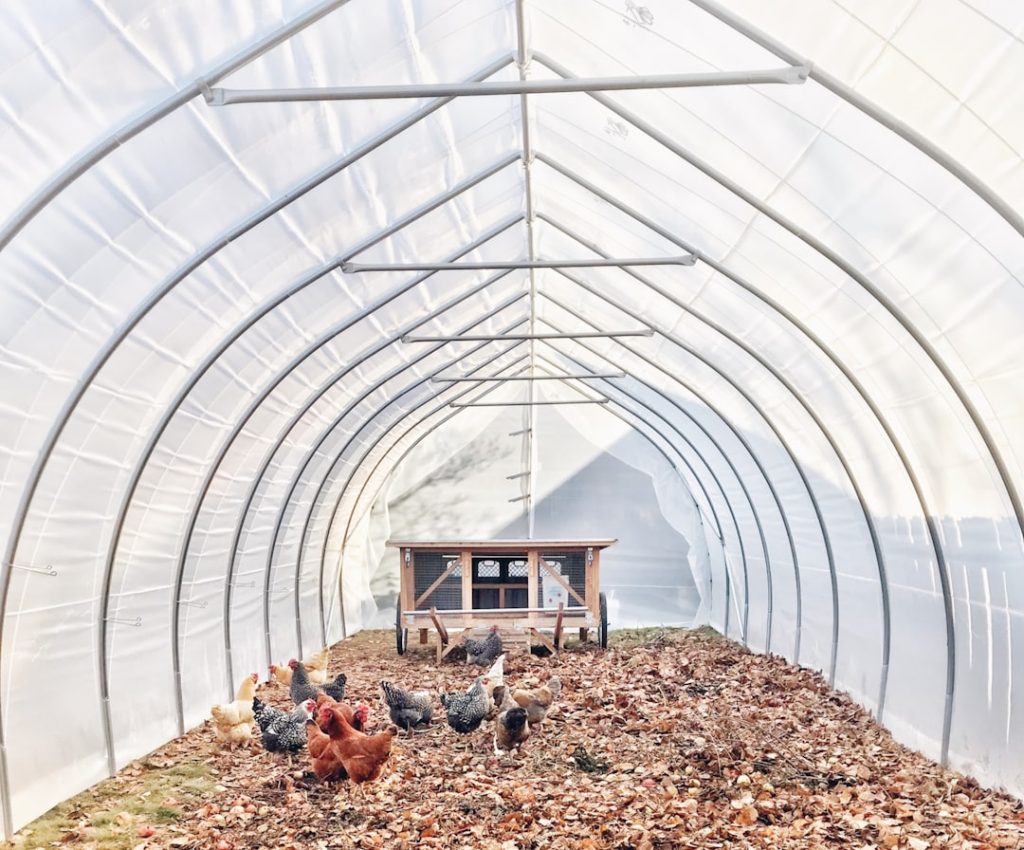Transitioning chickens to a new coop is a process that requires careful planning and execution to minimize stress for both the birds and their caretakers. This process is necessary when relocating, upgrading housing, or introducing new chickens to an existing flock. Successful transitions involve patience, close observation, and attentive management.
Chickens are creatures of habit and can experience stress when their environment changes. To facilitate a smooth transition, it is crucial to consider their natural instincts and behaviors. Gradual acclimation to the new surroundings is key, as is monitoring the chickens’ behavior throughout the process.
Essential elements of a successful transition include providing adequate shelter, protection from predators, proper nutrition, and easy access to clean water. Incrementally increasing the time chickens spend in their new coop allows them to adjust more comfortably. By following a methodical approach and remaining attentive to the chickens’ needs, caretakers can ensure a successful transition with minimal disruption to the flock’s well-being and routines.
Table of Contents
- 1 Acclimating Chickens to a New Coop
- 2 Monitoring Chicken Behavior in the New Coop
- 3 Providing Adequate Shelter and Protection
- 4 Ensuring Proper Nutrition and Water Access
- 5 Gradually Increasing Time Spent in the New Coop
- 6 Final Transition to the New Coop
- 7 FAQs
- 7.1 How long should chickens be kept in a new coop?
- 7.2 Why is it important to keep chickens in a new coop for a certain period of time?
- 7.3 What should be considered when determining how long to keep chickens in a new coop?
- 7.4 What are some signs that chickens have acclimated to their new coop?
- 7.5 Are there any exceptions to the recommended time frame for keeping chickens in a new coop?
Key Takeaways
- Coop transition is an important process for introducing chickens to a new living space.
- Acclimating chickens to a new coop involves gradually introducing them to the new environment.
- Monitoring chicken behavior in the new coop is crucial for ensuring their comfort and well-being.
- Providing adequate shelter and protection in the new coop is essential for keeping chickens safe from predators and the elements.
- Ensuring proper nutrition and water access is key to supporting the health and well-being of chickens during the transition.
Acclimating Chickens to a New Coop
Initial Introduction
Start by introducing the chickens to the new coop during the daytime when they are most active. Allow them to explore the new space at their own pace, without forcing them to enter the coop. You can encourage them to enter by placing treats or their favorite food inside the coop to entice them.
Familiarization and Comfort
It is important to be patient and allow the chickens to become familiar with their new surroundings before expecting them to roost or lay eggs in the new coop. Another effective way to acclimate chickens to a new coop is by placing familiar objects from their old coop inside the new one. This can include nesting boxes, perches, or even some of their bedding. Familiar scents and objects can help ease the transition and make the new coop feel more like home for the chickens.
Space and Exploration
Additionally, providing ample space for the chickens to move around and explore inside the coop will help them feel more comfortable and less confined. By taking these steps, you can help your chickens adjust to their new coop in a gradual and stress-free manner.
Monitoring Chicken Behavior in the New Coop

Once the chickens have been introduced to the new coop, it is important to monitor their behavior closely to ensure they are adjusting well. Pay attention to how they interact with each other, their eating and drinking habits, and their overall activity level. It is normal for chickens to be cautious and hesitant in a new environment, so some initial apprehension is to be expected.
However, if you notice any signs of distress or abnormal behavior, such as excessive pecking, lethargy, or refusal to enter the coop, it may indicate that the transition is causing undue stress for the chickens. To help alleviate any potential stress during the transition, consider spending time with the chickens in the new coop. Sitting quietly with them can help reassure them and encourage them to feel more at ease in their new surroundings.
Additionally, providing distractions such as hanging treats or toys can help keep the chickens occupied and reduce any anxiety they may be experiencing. By closely monitoring their behavior and taking steps to alleviate stress, you can ensure that your chickens are adapting well to their new coop.
Providing Adequate Shelter and Protection
One of the most important aspects of transitioning chickens to a new coop is ensuring that they have adequate shelter and protection from the elements and potential predators. The new coop should be secure, well-ventilated, and free from drafts to provide a comfortable environment for the chickens. Additionally, it is essential to provide proper insulation and bedding to keep the chickens warm during colder months.
Inspecting the coop for any potential entry points for predators such as rats, snakes, or raccoons is crucial to ensure the safety of the chickens. In addition to providing a secure coop, it is important to create a safe outdoor space for the chickens to roam during the day. This can be achieved by installing a secure fence or chicken wire enclosure to prevent predators from accessing the outdoor area.
Providing ample shade and areas for dust bathing will also contribute to the overall well-being of the chickens. By prioritizing shelter and protection for your chickens, you can create a safe and comfortable environment for them in their new coop.
Ensuring Proper Nutrition and Water Access
During the transition period, it is crucial to ensure that your chickens have access to proper nutrition and clean water at all times. Stressful situations such as transitioning to a new coop can impact the eating and drinking habits of chickens, so it is important to monitor their intake closely. Providing a balanced diet that includes a mix of grains, seeds, fruits, vegetables, and high-quality poultry feed will help support the overall health and well-being of your chickens during this time.
In addition to nutrition, access to clean water is essential for the health of your chickens. Ensure that waterers are kept clean and filled with fresh water daily to prevent dehydration and promote proper hydration. Placing multiple waterers throughout the coop and outdoor area will ensure that all chickens have easy access to water at all times.
By prioritizing proper nutrition and water access during the transition period, you can help support the overall health and well-being of your chickens as they adjust to their new coop.
Gradually Increasing Time Spent in the New Coop

Gradual Transition
As your chickens become more comfortable in their new coop, gradually increase the amount of time they spend inside it. Start by encouraging them to roost in the new coop at night while still allowing them access to their old coop or outdoor area during the day.
Limiting Access
Over time, gradually limit their access to their old coop or outdoor area until they are fully acclimated to their new living space.
Importance of Patience
It is important to be patient during this process and allow the chickens to adjust at their own pace. Rushing this step can cause unnecessary stress for the chickens and may result in resistance or reluctance to fully transition to the new coop.
A Smooth Transition
By gradually increasing their time spent in the new coop, you can help ensure a smooth and successful transition for your chickens.
Final Transition to the New Coop
Once your chickens have fully acclimated to their new coop and are spending most of their time there, it is time for the final transition. This involves closing off access to their old coop or outdoor area and allowing them to fully embrace their new living space. It is important to monitor their behavior during this final transition period to ensure that they are comfortable and adjusting well.
During this time, continue providing ample food, water, and attention to your chickens as they settle into their new home. It is normal for there to be some adjustment period as they establish new pecking orders and routines within the flock. By providing a supportive environment and closely monitoring their behavior, you can ensure that your chickens make a successful final transition to their new coop.
In conclusion, transitioning chickens to a new coop requires careful planning, patience, and observation. By acclimating them gradually, monitoring their behavior closely, providing adequate shelter and protection, ensuring proper nutrition and water access, and gradually increasing their time spent in the new coop, you can successfully transition your chickens with minimal stress and disruption. With proper care and attention, your chickens will soon feel at home in their new living space, allowing them to thrive and flourish in their new environment.
If you’re wondering how long to keep chickens in a new coop, you may also be interested in learning about the benefits of having a garden chicken coop. This article from Poultry Wizard discusses the advantages of having a coop in your garden and provides tips for creating a suitable environment for your chickens. Check it out here.
FAQs
How long should chickens be kept in a new coop?
Chickens should be kept in a new coop for at least 24-48 hours to allow them to acclimate to their new surroundings.
Why is it important to keep chickens in a new coop for a certain period of time?
Keeping chickens in a new coop for a period of time allows them to become familiar with their new environment, reducing stress and the likelihood of them trying to escape.
What should be considered when determining how long to keep chickens in a new coop?
Factors such as the age and breed of the chickens, the size and layout of the new coop, and the overall temperament of the flock should be considered when determining how long to keep chickens in a new coop.
What are some signs that chickens have acclimated to their new coop?
Signs that chickens have acclimated to their new coop include relaxed behavior, normal eating and drinking habits, and the ability to navigate the coop without difficulty.
Are there any exceptions to the recommended time frame for keeping chickens in a new coop?
In some cases, chickens may require more or less time to acclimate to a new coop based on their individual needs and the specific circumstances of the move. It’s important to observe the chickens closely and adjust the time frame as needed.
Meet Walter, the feathered-friend fanatic of Florida! Nestled in the sunshine state, Walter struts through life with his feathered companions, clucking his way to happiness. With a coop that’s fancier than a five-star hotel, he’s the Don Juan of the chicken world. When he’s not teaching his hens to do the cha-cha, you’ll find him in a heated debate with his prized rooster, Sir Clucks-a-Lot. Walter’s poultry passion is no yolk; he’s the sunny-side-up guy you never knew you needed in your flock of friends!







